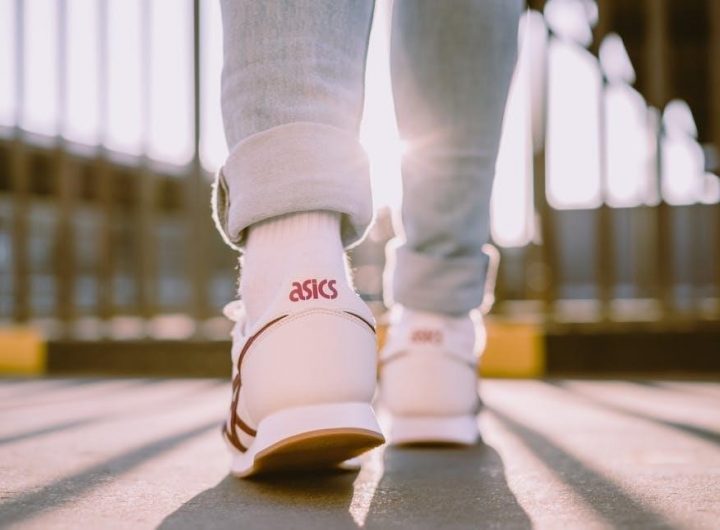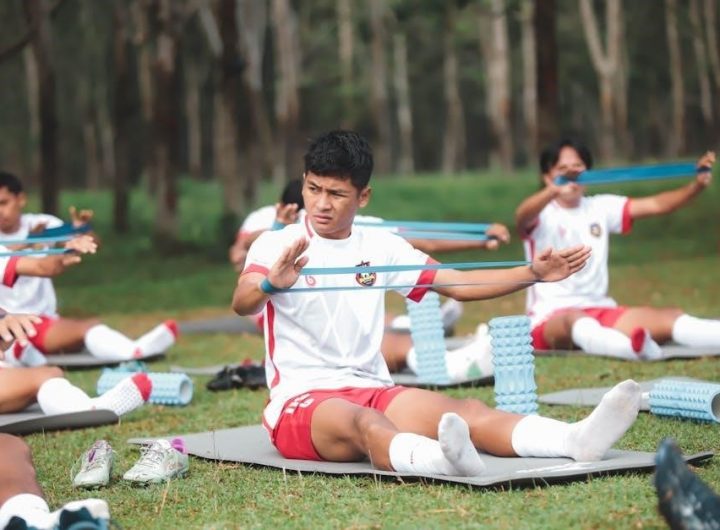
Choosing the right cycling attire based on temperature is crucial for comfort and performance. This guide provides a detailed breakdown for every climate condition‚ ensuring optimal rides.
Overview of Cycling Clothing Needs
Cycling clothing must balance comfort‚ functionality‚ and protection across varying temperatures. Proper attire enhances performance by managing moisture‚ regulating body temperature‚ and reducing wind resistance. Layering is key‚ with breathable fabrics for warm conditions and insulating materials for cold. Visibility‚ fit‚ and mobility are equally important‚ ensuring safety and ease of movement. The right gear adapts to changing weather‚ ride intensity‚ and personal comfort‚ making it essential to choose wisely based on conditions.
Importance of Dressing According to Temperature
Dressing according to temperature ensures comfort‚ safety‚ and peak performance. Incorrect attire can lead to overheating‚ hypothermia‚ or discomfort‚ hindering your ride. Proper clothing helps regulate body temperature‚ manage moisture‚ and protect against wind and rain. It also enhances visibility and reduces fatigue‚ allowing you to focus on the road. Adapting your wardrobe to the weather prevents distractions and ensures a more enjoyable cycling experience regardless of conditions.
Cold Weather Cycling (Below 32°F/0°C)
Extreme cold demands high-performance gear like thermal base layers‚ insulated jackets‚ and windproof accessories to maintain warmth and protect against harsh conditions during winter rides.
Base Layers for Extreme Cold
A high-quality base layer is essential for cold-weather cycling. Opt for moisture-wicking fabrics like merino wool or synthetic blends that trap warmth while keeping skin dry. Thermal base layers with a snug fit ensure efficient heat retention. Look for materials with breathability to prevent overheating during intense efforts. For temperatures below freezing‚ consider a thermal or long-sleeve base layer to cover your torso and arms completely; Pair with insulated outerwear for maximum protection against frigid conditions.
Thermal and Insulated Outerwear
For extreme cold‚ thermal and insulated outerwear is vital. Choose a windproof and water-resistant cycling jacket with a breathable membrane‚ such as Gore-Tex‚ to shield against elements while allowing moisture to escape. Insulated jackets with thermal lining provide exceptional warmth. Pair with thermal bib tights or leggings for full lower body coverage. Look for adjustable cuffs and hem seals to prevent cold air infiltration. These layers are designed to maintain body heat during long rides in sub-freezing temperatures‚ ensuring comfort and protection.
Accessories for Frigid Conditions
For extreme cold‚ essential accessories include thermal gloves or ski mittens to prevent hand numbness‚ and a balaclava or neck warmer to protect your face and neck. Thermal overshoes keep feet dry and warm‚ while goggles or clear glasses shield your eyes from wind and cold. Don’t forget warm woolen socks and consider hand and toe warmers for added insulation. These accessories are crucial for maintaining comfort and safety in freezing temperatures during your ride.

Cool Weather Cycling (32°F/0°C to 50°F/10°C)
Cool weather demands layers that balance warmth and breathability. Opt for moisture-wicking base layers‚ thermal jerseys‚ and windproof jackets. Gloves and lightweight accessories keep you comfortable and protected.
Layering Strategies for Cool Temps
For cool weather‚ start with a moisture-wicking base layer to manage sweat. Add a thermal or fleece middle layer for insulation‚ and finish with a windproof jacket. This system allows you to adjust based on effort and conditions. Accessories like gloves‚ neck gaiters‚ and knee warmers provide extra protection. Ensure fabrics are breathable to prevent overheating during intense efforts. Layering strategically helps maintain comfort and performance in fluctuating temperatures‚ keeping you warm yet agile on the bike.
Windproof and Water-Resistant Gear
Windproof and water-resistant clothing is essential for cool weather cycling. A lightweight windbreaker or jacket with a DWR finish shields against wind chill and light rain. Look for breathable fabrics to prevent moisture buildup. Water-resistant pants or tights can enhance protection‚ while waterproof shoe covers and gloves keep extremities dry. These items are versatile and can be easily stowed if conditions improve‚ ensuring comfort and performance across varying weather conditions without compromising mobility or breathability.
Gloves and Hand Protection
Gloves are crucial for hand protection and control while cycling. For cool weather‚ opt for thermal‚ water-resistant gloves with grip and insulation. In colder conditions‚ choose thicker‚ waterproof options with padding to prevent numbness. Lightweight‚ breathable gloves are ideal for milder temps‚ offering dexterity without overheating. Ensure proper fit to maintain control and comfort‚ and consider touch-screen compatibility for navigation. Investing in high-quality gloves enhances safety and performance across various weather conditions‚ keeping hands protected and functional throughout your ride.
Mild Weather Cycling (50°F/10°C to 64°F/18°C)
Mild temperatures call for moisture-wicking base layers‚ lightweight jerseys‚ and breathable cycling shorts. These combinations ensure comfort and regulate body temperature during rides in moderate conditions.
Moisture-Wicking Base Layers
Moisture-wicking base layers are essential for mild weather cycling. They keep you dry by pulling sweat away from your skin‚ preventing chafing and discomfort. Opt for breathable fabrics like merino wool or synthetic blends that regulate temperature and reduce odor. A snug fit ensures optimal performance‚ while lightweight designs allow for flexibility and airflow. These layers are perfect for maintaining comfort during rides in temperatures between 50°F and 64°F‚ ensuring you stay cool and dry without overheating.
Lightweight and Breathable Jerseys
Lightweight and breathable jerseys are ideal for mild weather cycling‚ offering comfort without overheating. Look for moisture-wicking fabrics like polyester or merino wool that dry quickly and regulate body temperature. A snug‚ aerodynamic fit enhances performance‚ while mesh panels improve ventilation. These jerseys are perfect for rides in temperatures between 50°F and 64°F‚ balancing comfort and functionality to keep you cool and dry during your ride.
Comfortable Cycling Shorts
Comfortable cycling shorts are essential for mild weather rides‚ offering support and flexibility. Opt for lightweight‚ breathable fabrics like lycra or spandex that wick moisture and reduce chafing. Look for padding designed for long-distance comfort without restricting movement. Pair with a moisture-wicking base layer for optimal performance. Features like wide waistbands and flat seams enhance comfort‚ making these shorts ideal for rides in temperatures between 50°F and 64°F‚ ensuring a enjoyable cycling experience.
Warm Weather Cycling (64°F/18°C to 80°F/27°C)
For warm weather cycling‚ prioritize lightweight‚ breathable attire. Choose moisture-wicking fabrics to keep cool and dry. Consider sleeveless jerseys or arm warmers for versatility. Opt for well-ventilated clothing and incorporate sun protection like hats or sun sleeves. Stay hydrated with appropriate hydration systems and ensure visibility with reflective or bright clothing. Adjust your outfit based on ride intensity and personal comfort to maintain optimal performance and enjoyment.
Lightweight and Ventilated Clothing
Opt for lightweight‚ breathable fabrics like mesh panels to enhance airflow and moisture-wicking properties. Choose jerseys with open-weave designs and cycling shorts made from aerated materials. Consider arm warmers or sleeves for adjustable coverage. Select clothing with built-in UPF protection to guard against the sun. Ensure a snug yet comfortable fit to minimize drag. Lightweight materials help regulate body temperature‚ preventing overheating during intense rides. Proper ventilation ensures sweat evaporates quickly‚ keeping you cool and dry in warmer conditions.

Sleeveless Jerseys and Arm Warmers
Sleeveless jerseys are ideal for warm weather‚ offering maximum breathability and moisture-wicking properties. Pair them with arm warmers for versatility in fluctuating temperatures. Arm warmers can be easily removed and stored if it gets too hot‚ providing adaptability. Opt for lightweight‚ UPF-protected fabrics to shield against the sun. This combination allows riders to maintain comfort without compromising performance‚ making it perfect for rides where conditions change throughout the day. Sleeveless jerseys and arm warmers strike a balance between style‚ functionality‚ and thermal regulation.
Breathable Fabrics for High Temperatures
Breathable fabrics are essential for high-temperature cycling‚ as they wick moisture and enhance airflow. Materials like Merino wool‚ polyester blends‚ and mesh panels excel in hot conditions. These fabrics allow sweat to evaporate quickly‚ preventing overheating; Look for UPF protection to shield against UV rays. Lightweight‚ ventilated designs ensure maximum comfort without sacrificing performance. Pairing breathable tops with lightweight shorts or bibs creates an optimal outfit for warm weather rides‚ keeping you cool and dry mile after mile.

Hot Weather Cycling (Above 80°F/27°C)
For extreme heat‚ prioritize hydration‚ sun protection‚ and lightweight‚ breathable clothing. Moisture-wicking fabrics and UPF protection help maintain comfort and prevent overheating during intense rides.
Minimalist and Moisture-Wicking Attire
Opt for lightweight‚ breathable fabrics like polyester or merino wool that wick sweat away efficiently. Avoid heavy or dark-colored clothing‚ as it absorbs heat. Choose form-fitting jerseys and shorts to reduce drag while maintaining comfort. Look for UPF-rated clothing to protect against harmful UV rays. Minimalist designs ensure maximum ventilation‚ keeping you cool and dry in high temperatures. Avoid over-layering to prevent overheating and prioritize moisture-wicking socks for added comfort during long rides.
Hydration and Sun Protection
Staying hydrated is essential in hot weather. Carry a hydration pack or water bottles to ensure consistent fluid intake. Apply sweat-resistant sunscreen with high SPF to protect against UV rays. Wear UPF-rated cycling clothing to block harmful sun exposure. Plan regular water breaks and adjust your ride intensity to avoid dehydration. Proper hydration and sun protection are crucial for maintaining energy levels and preventing heat-related exhaustion during long rides in warm conditions.
Optimizing Ventilation
Proper ventilation is key to maintaining comfort in hot conditions. Choose lightweight‚ breathable fabrics that wick moisture away from the skin. Look for cycling jerseys and shorts with mesh panels in high-sweat areas to enhance airflow. UPF-rated materials provide sun protection while allowing heat to escape. Ensuring optimal ventilation helps regulate body temperature‚ prevents overheating‚ and keeps you comfortable during intense or long rides. Prioritize moisture-wicking fabrics and well-ventilated designs for ultimate performance.

Additional Cycling Essentials
Essential items include helmets for safety‚ footwear for pedal efficiency‚ and visibility accessories like reflective gear to enhance safety on the road.
Helmets and Safety Gear
A well-fitting helmet is mandatory for safety‚ offering protection in case of falls. Look for helmets with good ventilation to keep cool and aerodynamic designs for efficiency. Additional safety gear includes knee pads for downhill rides and reflective accessories to enhance visibility. Gloves provide grip and cushioning‚ while lights on the bike improve visibility. Always ensure gear fits properly and meets safety standards to maximize protection and comfort during rides.
Footwear and Socks
Choose footwear that matches your cycling style‚ such as clipless shoes for efficiency or casual sneakers for comfort. Opt for breathable materials to prevent moisture buildup. Pair with moisture-wicking socks to keep feet dry and blister-free. In colder conditions‚ consider thermal socks and overshoes for warmth; Proper footwear enhances pedaling performance and overall riding comfort‚ ensuring a more enjoyable experience regardless of the temperature or terrain. Always prioritize fit and functionality to avoid discomfort during long rides.
Visibility and Reflective Accessories
Increase your safety on the road with reflective gear and high-visibility clothing. Add rear lights and reflective strips to your bike for enhanced visibility. Wear brightly colored jerseys or vests with reflective accents‚ especially in low-light conditions. Consider LED armbands or clip-on reflectors for added visibility. The more you invest in visibility‚ the safer you’ll be‚ as drivers and pedestrians will notice you more easily. Prioritize reflective accessories to stay safe and confident on every ride.

Layering for Variable Conditions
Mastering layering is essential for cycling in unpredictable weather. Start with a moisture-wicking base layer‚ add insulating mid-layers‚ and finish with a breathable‚ windproof outer layer for adaptability and comfort.
Base Layer
A high-quality base layer is fundamental for any cycling outfit. It wicks moisture away from the skin‚ preventing chafing and maintaining dryness. Ideal fabrics include merino wool and synthetic materials like polyester‚ which offer excellent breathability and temperature regulation. For colder conditions‚ thermal base layers provide additional warmth without restricting movement. Always choose a snug fit to ensure maximum efficiency in moisture transfer‚ keeping you comfortable during both intense efforts and steady rides across varying temperatures.
Middle Layer
The middle layer adds insulation and versatility to your cycling outfit. Fleece-lined jerseys or lightweight fleeces are ideal for cool to mild weather‚ trapping warmth while allowing airflow. For colder rides‚ consider thermal or insulated options that provide extra heat without bulk. This layer is easily removable if you overheat‚ making it perfect for fluctuating temperatures. It bridges the gap between the base and outer layers‚ ensuring consistent comfort and adaptability during your ride;
Outer Layer
The outer layer shields you from wind‚ rain‚ and cold‚ while maintaining breathability. Waterproof and windproof jackets are essential for harsh conditions‚ preventing heat loss and moisture buildup. Look for designs with adjustable cuffs and hems for a snug fit. Reflective accents enhance visibility‚ and zippered pockets keep essentials accessible. This layer is your first line of defense against the elements‚ ensuring protection without compromising mobility or comfort during your ride.

Final Thoughts
Dressing appropriately for cycling ensures comfort‚ safety‚ and performance across all temperatures. Experiment with layers and materials to personalize your wardrobe for optimal riding experiences.
Adapting to Changing Conditions
When cycling‚ weather can shift unexpectedly. Layering is key to maintaining comfort. Start with a breathable base layer‚ add a mid-layer for insulation‚ and finish with a waterproof or windproof outer shell. Adjust clothing as temperatures rise or fall‚ and consider carrying lightweight‚ packable extras like arm warmers or a vest. Versatility ensures you’re prepared for any condition without sacrificing performance or comfort during your ride.
Personalizing Your Cycling Wardrobe
Every cyclist’s needs are unique‚ so tailor your wardrobe to fit your riding style‚ body type‚ and climate. Consider moisture-wicking fabrics for high-intensity rides or thermal layers for colder conditions. Reflective gear enhances visibility‚ while custom fits ensure comfort. Experiment with different combinations to find what works best for you‚ and don’t hesitate to invest in quality pieces that align with your riding habits and personal preferences for optimal performance and enjoyment.
 window guide clips
window guide clips  vegetable planting guide zone 9
vegetable planting guide zone 9  lucky brand jeans fit guide
lucky brand jeans fit guide  sea of stars trophy guide
sea of stars trophy guide  cartagena guide book
cartagena guide book  wanted dead trophy guide
wanted dead trophy guide  recovering from emotionally immature parents pdf
recovering from emotionally immature parents pdf  lego snowman instructions
lego snowman instructions  weber spirit 2 assembly instructions
weber spirit 2 assembly instructions  dtf care instructions
dtf care instructions